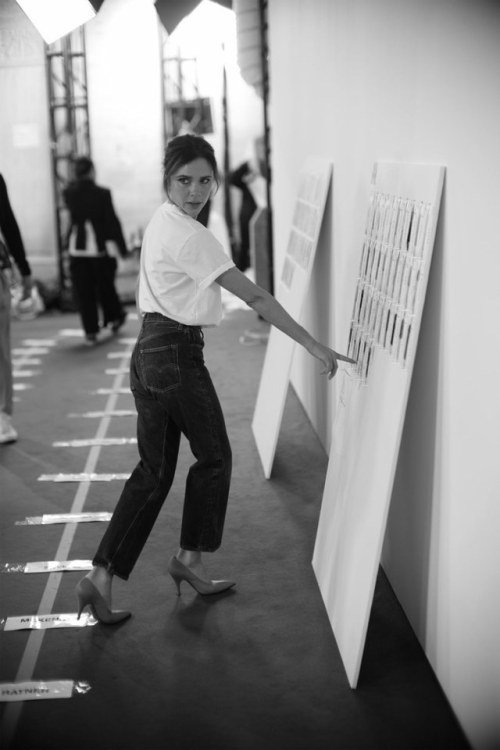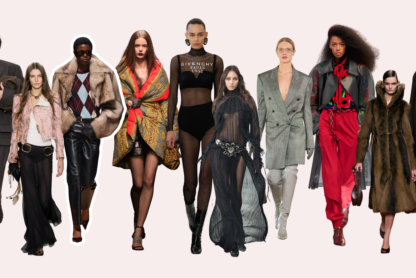Sustainability is an issue that affects every aspect of our lives. It has been impacted negatively by the fashion industry for a long time, so nowadays, companies have no choice but to do as much as possible to minimize their environmental impacts. From the side of the consumer, there is a more increasing demand for everything sustainable and ethical; fashion companies are also being evaluated by regulators who determine which ones are sustainable and which ones are not.
Due to the pressure the companies face, but also the fact that they become more conscious of climate change, new sustainability job opportunities are being created. In addition, some of the existing roles that traditionally didn’t have a sustainability component see their duties being expanded.
If you’re looking to start your career in fashion or you simply want to learn more and stay informed about sustainability, let’s talk about how it has affected one role in particular: fashion PR. But before diving into the subject and see what a modern PR manager needs to do to increase awareness about the company’s sustainability plans and actions, let’s recall first why there is a need for sustainability in the first place, what are the challenges the industry is still facing, and how big is the sustainable fashion market.
How Sustainability Is Changing Fashion PR In 2023
Why Fashion Needs to Be More Sustainable?
Impact on the environment
It’s no secret that the fashion industry has a negative impact on the environment and climate. According to the UN Alliance for Sustainable Fashion, the fashion industry is a $2.4 trillion-dollar global industry that is responsible for an estimated 2-8% of the world’s greenhouse gas emissions. Textiles account for approximately 9% of annual microplastic losses to the oceans. And around 215 trillion liters of water per year are consumed by the industry. Fashion also contributes deforestation, pollution and waste (did you know that less than 1% of clothing is recycled?), and the use of unsustainable materials like polyester and acrylic. Plus, the excessive amount of plastic packaging we get from the stores. So the industry needs to invest in more sustainable materials (i.e silk, linen, and cotton production) and adopt practices that are more respectful of the environment.
Impact on society
On the other hand, the fashion industry has an impact on society, with the problem with labor rights and working conditions of garment workers across the supply chain, particularly in the Asia Pacific and other southern regions. So brands need to be sustainable to improve these issues.
Consumer awareness
Finally, the industry needs to become more sustainable because of the consumers, regulators, and advocacy groups who are becoming more aware of the negative impact on the environment. And, as a result, demand more sustainable clothes and pressure the brands to take steps in that direction.
How Big Is The Sustainable Fashion Market?
While we cannot evaluate the exact sustainable fashion market size, according to the 2022 fashion accountability report of Remake, a non-profit organization fighting for fair pay and climate justice in the clothing industry, many fashion brands are showing progress and their efforts are expected to grow. Remake has been evaluating fashion companies on their social and environmental progress since 2016. And this year’s report assessed 58 of the world’s largest companies (with an annual revenue of over USD $100 million) across fast fashion, luxury, and big-box retail in 6 areas: Traceability, Wages and Wellbeing, Commercial Practices, Raw Materials, Environmental Justice, and Governance.
Looking at the results provided by the report, 32 companies ( corresponding to a total of 55%) report their carbon emissions across their entire value chain; 26 companies (45%) have set short-term emissions reduction targets in line with the pathway to 1.5℃. 3 companies (5%) – Burberry, Everlane, and the H&M Group – met all 4 of Remake’s climate demands: they published their full emissions; they have set (and had approved) short-term 1.5℃ pathway and long-term net-zero targets; they have also demonstrated that they are reducing their total greenhouse gas emissions compared to the previous years.
Additionally, 11 companies (19%) demonstrated that they are investing in suppliers and offering financial incentives or assistance for factories to lower their carbon footprint. These companies are: American Eagle Outfitters, Columbia Sportswear, Gap Inc. (GAP, Old Navy, Banana Republic, Athleta), Kering (Gucci, Balenciaga), Levi Strauss & Co., Lululemon, PUMA, Ralph Lauren, Reformation and Target. Finally, 14 companies (18%) with Kering (Gucci, Balenciaga), Levi Strauss & Co., and Patagonia at the top, offer upcycling or repair services.
Among so many brands assessed, what are the top sustainable fashion brands of 2022?
Luckily, there are high-end fashion brands which produce ethical clothes. They play a critical role in the environment given their size and purchasing power. So they are the ones with the biggest influence and responsibility to create positive change.
Stella McCartney
First, there is Stella McCartney who began using organic cotton in 2008 and 100% sustainable viscose in 2016. In 2012, the brand joined the Ethical Trading Initiative. And to measure the impact of its business, Stella McCartney uses “Environmental Profit & Loss”, a measurement tool for sustainable luxury.
Vivienne Westwood
Vivienne Westwood is another luxury brand renowned for the use of sustainable materials and technologies. As well as its environmental and human rights campaigns.
Burberry
If we look at the Remake report again, the brand that scored the most points and who is considered to have made the most sustainability efforts is Burberry. It has included in its corporate strategy some initiatives like support to farming communities, nature restoration, chemicals management, and the extension of product life through repair, resale, and rental programs.
Everlane
The company at the second place is Everlane, as it provides more transparency into labor rights noncompliance. And has reached 90% of its goal to design out all virgin plastics from its products and packaging. Everlane is also recognized for endorsing the U.S. FABRIC Act, which will introduce joint accountability among brands, retailers, and manufactures for workplace wage violations.
LEVI’S
Another well-ranked brand is LEVI’S, known for improving its animal welfare policy and introducing lower-cost financing to suppliers implementing low-carbon processes. LEVI’S relies on Water Less technology. And committed to reduce water use during manufacturing by 50% in areas of high water stress by 2025.
H&M Group
Finally, we have the H&M Group (H&M, COS, ARKET, & Other Stories). Yes, this may come as a surprise, but even though there may be fast-fashion brands inside this Group, it has shown strong sustainability efforts. It ranks number 1 in the Remake’s traceability category. Plus, and what’s also curious is that for now, it’s the only company along with Burberry that has set net-zero targets.
Despite all the progress, efforts still need to be made. The urgency to create a sustainable future has pushed the fashion industry into creating more and more sustainability jobs. Such as the sustainability product developer, product innovator, sustainable sourcing manager … But it’s not only the research about the products that counts: it’s also the way you communicate about it that matters, and this is the responsibility of a PR Manager.
How Sustainability Is Changing Fashion PR?
PR Managers play a huge role in informing about fashion sustainability. It’s simple: they help brands to communicate their actions in a clear and convincing message that will resonate and build trust with the consumers. So they are like the bridge between the brand and the consumer. Public Relations can shift the consumers’ behaviors in one direction or the other: if they manage to send a strong message, this shift can be positive. Otherwise, it can weaken the brand’s relations with people and make them question whether they should buy the product or not.
Contrary to a Marketing manager who focuses on promoting products to fuel sales, a PR manager must ensure the brand has adequate proof of the actions it takes to facilitate the brand’s relationship with the media and customers. While the two roles can overlap a bit depending on the company, a PR Manager helps to go beyond the marketing by providing real data. It’s no longer enough to create a beautiful image around a product to sell it, as people are paying more attention to the labels, and they recognize greenwashing attempts more easily as well.
PR specialist’s responsibilities usually include brainstorming, planning, and executing strategies and campaigns. They take care of press releases, organize events, and other activities that allow them to spread the message about what fashion companies are doing for sustainability.
How sustainability has expanded PR’s responsibilities?
1. More transparency and traceability
Nowadays, PR Specialists need to educate themselves even more on what’s going on inside a brand. Particularly in its supply chain. Though it’s rather difficult for companies to know all the factories where their garments are produced and enter into contact with all the suppliers, traceability is a necessary condition to make progress, and PRs need to have that information and communicate it properly.
2. Work more closely with the brand to gather information
The need to have better traceability means it’s important for PRs to have a better inside perspective on what’s really going on in the brand. And that involves choosing the right communicator. It is common for fashion companies – especially the big ones in the industry – to work with external communication agencies. While these can manage the brand’s external communication, they don’t have access to all the information and cannot verify it as easily.
Other companies have an in-house PR team who manages communications. They can’t compare to the size of a PR agency for sure. Plus smaller companies may not have enough resources compared to big brands to conduct deep research and ensure massive PR campaigns. But PR Managers who work inside the brand do have the advantage of getting inside perspective; they know (or at least – have more chances to know) everything about the brand, so their message can be more clear and supported with evidence. Plus, they can collaborate with the other departments to gather more information that they can use for their communication purposes.
3. Experiment with the digital platforms
Nowadays, there is a need to create even deeper communication with the consumers, and that involves experimenting with the different tools to spread the message about the company’s sustainability plans and actions. The rise of the digital platforms and social media provides the possibility to build communication between brands and consumers more easily. And PRs need to get creative with the campaigns and the words they choose to attract the audience’s attention and gain their trust.
4. More education on sustainability
In addition to all the knowledge and skills they must have, today, PR specialists basically have to be experts in sustainability. They need to know all the technical words related to sustainability, be familiar with all its notions and practices, and manage a lot of data. So if you are considering a career in PR, be prepared to learn about this topic in depth.
We hope you have a more clear idea now of how sustainability is changing fashion and the role of PR, and we encourage you to learn more about it as sustainability is becoming transcendent to many fashion jobs.









